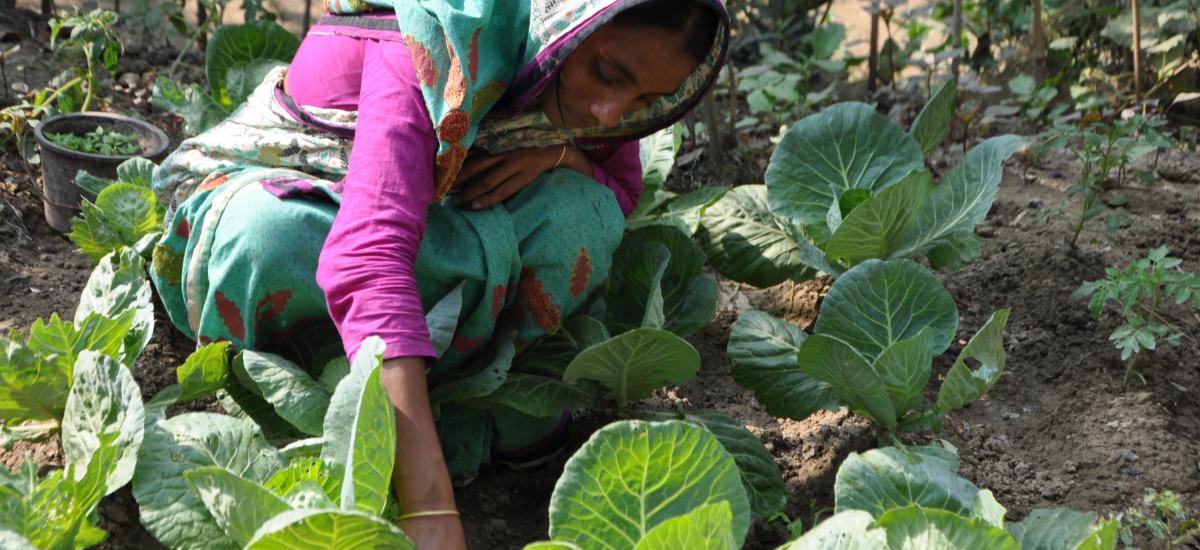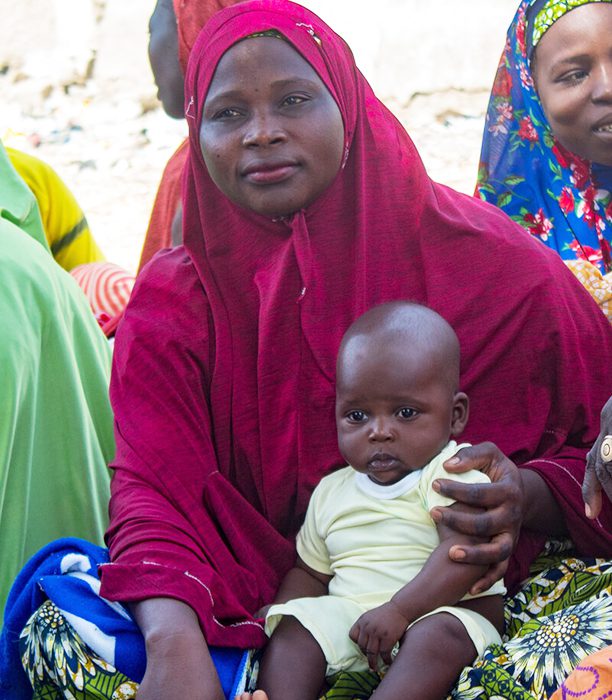
Gardening: A Sustainable Solution for Malnutrition?
Over three million children die every year due to causes related to malnutrition—most of them in low-income countries. The situation is particularly serious in Bangladesh where 40 percent of children suffer from chronic undernutrition, leaving their growth diminished and their bodies weak and susceptible to infectious diseases. The Lancet has called malnutrition the most “desperately neglected aspect of maternal, newborn, and child health.” Yet with the #March4Nutrition and preparations for the Nutrition for Growth summit in Rio this summer, the issue is gaining well-deserved attention.
There is now clear consensus that interventions should focus on the first 1,000 days of life, which is the period from the beginning of a pregnancy until a child’s second birthday. During those 1,000 days, growth is fastest and nutrient needs are especially great. This is also the time when the child’s organs, brain and immune system are developing. The effects of malnutrition are particularly damaging to these, resulting in potentially life-long consequences for a child’s health and intellectual capacity.
Micronutrient supplements containing certain vitamins and minerals can help combat malnutrition in the short term, but don’t address the reasons for a poor diet and are limited in the number of nutrients they improve. A more sustainable solution is to support people in growing and eating nutrient-rich food. In addition to making the family meal more tasty and enjoyable, such solutions contain many more micronutrients and bioactive compounds which interact to promote good health.
Although the organization’s foray into malnutrition work began with vitamin A supplementation, Helen Keller International (HKI) has long championed a food-based approach to addressing malnutrition. In Bangladesh, HKI’s Enhanced Homestead Food Production (EHFP) program has been working with local NGOs since the 1990s. The program helps women farmers establish year-round gardens to grow more diverse varieties of fruits and vegetables for family consumption. Participants also receive training to raise poultry and discuss behaviors that contribute to better nutrition and hygiene for themselves and their children. Furthermore, advice on how to market surplus food helps women earn a small income, which contributes to strengthening their role in the household.
“We know the program is increasing household access to and consumption of nutrient-rich foods, and allows for more interesting and varied diets,” says Jennifer Nielsen, HKI’s Senior Nutrition Advisor.
It is less clear whether this approach can also improve child growth and health because most studies to date were too small, too short-term or did not employ rigorous methodology. Evaluating a complex program such as homestead food production is more challenging than evaluating micronutrient supplementation. A team of researchers from Heidelberg University’s Institute of Public Health set out to help fill this gap with the Food and Agricultural Approaches to Reducing Malnutrition (FAARM) study, funded through a generous grant from the German Federal Ministry of Education and Research and several other donors.
The researchers are evaluating HKI’s Enhanced Homestead Food Production program in Habiganj District of Sylhet Division in Bangladesh. Using the gold standard design of a community-randomized controlled trial, the FAARM study includes 2,600 women in 96 communities. In 48 communities, chosen randomly, women receive support from HKI to create productive gardens, raise chickens and adopt better dietary and hygiene practices. Four years later, the researchers will compare whether the children under age three of these women show better growth and health than their counterparts in the 48 control villages whose mothers did not receive any support.
“At the beginning, the two groups of villages are exactly the same,” explains lead researcher Sabine Gabrysch, MD, PhD, epidemiologist and professor at Heidelberg University’s Institute of Public Health. “Any difference we see between the children in intervention and control should be because of this intervention, not because of other factors.”
For a child to benefit from the program throughout their crucial first 1,000 days, the program needs to be in place well before conception to ensure women are well-nourished. “So basically you already need to enable the women to do the gardening before they get pregnant, and there is no study, to my knowledge, that starts that early,” says Gabrysch. “FAARM is different in that we recruited young women and the study is running over four years, so we can measure the children who have been conceived after the study was started, who could have benefitted for the full 1,000 days.”

The aim of the research project is to find out whether the homestead food production program can reduce malnutrition in women and children, and in particular, if it can improve child growth. “In addition, we want to know how it is working,” explains Gabrysch. “We will track indicators along the pathways to understand the contributions of access to healthier foods, improved feeding practices, better hygiene, increased income and empowerment of the young women.”The team has encountered many challenges ranging from volatile political conditions to snail-paced bureaucracies, all of which lead to delays in project activities. Political unrest has proven especially inconvenient, as it results in disruption of transport routes as well as sudden outbreaks of violence on the streets. Because the local culture of Sylhet is quite conservative, women often cannot attend trainings without their husbands or in-laws, or cannot even leave the house, requiring the implementing team to work harder to reach them and to build trust with their families.
Yet despite the difficulties, both the research and the intervention are making steady progress. “We had a baseline survey last year that took us a year to prepare and nearly three months to conduct,” says Gabrysch. “We interviewed all 2,600 women, measured weight and height of women and children, and took finger-prick blood samples for micronutrients and hemoglobin.” Thanks to the HKI team and their local partner NGO, women’s groups are now meeting regularly and gardens are producing abundantly.
The team secured additional funding to visit the women once every two months in order to collect data about pregnancies, diets and diarrhea. They also intend to reach all women within three days of birth to measure the newborn baby. “We want to see how much of the impact is achieved in utero,” says Gabrysch. “A lot of the babies in Bangladesh are born too small already, and so the question is, are they born bigger as a result of the program?”
While the official results of this research will not be available until after 2019, the program is already making a difference. “Women are gaining greater respect in their households because their gardens are more prolific, and their new skills give them greater self-confidence,” says Nielsen.




